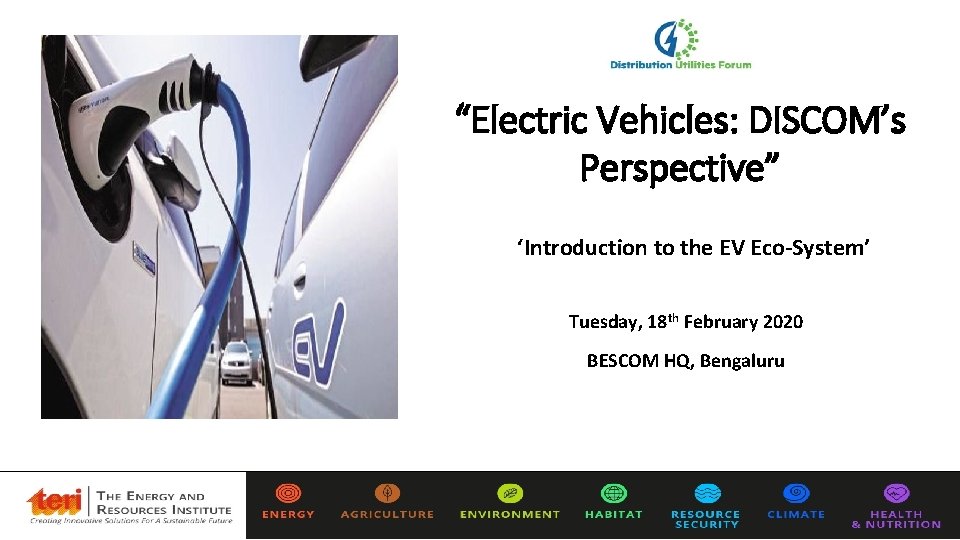Understanding Dysprosium's Importance And The Future Of Electric Vehicles

Table of Contents
Dysprosium: The Heart of Electric Vehicle Motors
Dysprosium's unique magnetic properties are indispensable for the high-performance neodymium magnets used in electric vehicle motors. These magnets are not merely components; they are the powerhouse behind the torque, efficiency, and overall performance of EV powertrains. Without dysprosium's contribution to these magnets, the current generation of electric vehicles simply wouldn't be possible.
-
Key characteristics: Dysprosium exhibits high coercivity (resistance to demagnetization), meaning it maintains its magnetic strength even under powerful opposing forces. Its high remanence (magnetic strength) ensures potent magnetic fields, crucial for efficient energy conversion. Furthermore, its excellent temperature stability allows the magnets to operate reliably across a wide range of temperatures, maintaining performance even under extreme conditions.
-
Applications beyond EV motors: The significance of dysprosium extends beyond electric vehicles. Its unique magnetic properties are also highly valued in wind turbines, contributing to the efficiency of renewable energy generation. The aerospace industry utilizes dysprosium magnets in various components, demanding high reliability and performance. Even the medical field benefits, with dysprosium magnets playing a role in advanced medical devices.
The Global Dysprosium Supply Chain: Challenges and Opportunities
The global dysprosium supply chain presents significant challenges and opportunities that will shape the future of electric vehicles. A key concern is the geopolitical vulnerability associated with its distribution.
-
Geopolitical vulnerabilities: A substantial portion of the world's dysprosium supply is concentrated in a few countries, most notably China. This concentration creates potential supply chain risks, price volatility, and geopolitical dependencies. Diversification of supply sources is crucial to mitigate these risks.
-
Mining and processing challenges: Extracting dysprosium is a complex and environmentally intensive process. Mining activities can lead to habitat destruction, water pollution, and greenhouse gas emissions. Sustainable mining practices and responsible environmental management are paramount.
-
Recycling and resource recovery: Developing efficient dysprosium recycling technologies is crucial for minimizing resource depletion and reducing the environmental impact of the EV industry. Recycling end-of-life electric vehicles and their components is essential to recover valuable dysprosium and other rare earth elements.
-
Exploration for new deposits: Investing in exploration and the development of new dysprosium deposits is vital to diversify the supply chain and ensure future availability. This requires significant investment in geological surveys and advanced exploration technologies.
Strategies for a Sustainable Dysprosium Supply for the EV Industry
Addressing the challenges associated with dysprosium necessitates a multi-pronged approach focusing on technological innovation, responsible sourcing, and international cooperation.
-
Developing alternative magnet materials: Research into rare-earth-free magnets and magnets with reduced dysprosium content is underway, offering potential long-term solutions to lessen reliance on this critical element. These alternatives could include using other rare-earth elements or exploring entirely new materials.
-
Improving magnet design and efficiency: Optimizing magnet design and manufacturing processes can significantly reduce the amount of dysprosium needed per motor without compromising performance. This could involve advancements in magnet geometry, materials science, and manufacturing techniques.
-
Promoting responsible sourcing and ethical mining practices: Ensuring responsible sourcing and minimizing the environmental impact of dysprosium mining are crucial for the long-term sustainability of the EV industry. This includes adhering to strict environmental regulations, promoting fair labor practices, and investing in environmental remediation projects.
-
International cooperation and policy initiatives: Collaborative efforts between governments, industries, and research institutions are crucial to address the challenges of dysprosium supply and promote sustainable practices. International agreements on responsible mining, recycling, and resource management are essential.
The Future of Dysprosium and Electric Mobility
The future of electric mobility is intrinsically linked to the secure and sustainable supply of dysprosium. Navigating the challenges related to its availability requires innovative solutions, substantial investment in research and development, and strong international cooperation. A responsible transition to a cleaner transportation sector demands a proactive and comprehensive approach to dysprosium sourcing, usage, and recycling.
Conclusion
Dysprosium’s importance in the electric vehicle industry is undeniable. Its unique magnetic properties are fundamental to the high-performance motors driving the EV revolution. However, concerns regarding supply chain security, environmental impact, and resource scarcity necessitate immediate and decisive action. By investing in research and development of alternative materials, optimizing magnet design, promoting responsible sourcing, and fostering strong international collaboration, we can create a sustainable future for electric vehicles. Let's work together to secure a robust and sustainable supply of dysprosium and pave the way for a truly green transportation revolution. Learn more about the crucial role of dysprosium and its impact on the future of electric vehicles, and contribute to finding solutions for a sustainable future.

Featured Posts
-
 Us Attorney Generals Warning To Minnesota Compliance With Transgender Athlete Ban
Apr 29, 2025
Us Attorney Generals Warning To Minnesota Compliance With Transgender Athlete Ban
Apr 29, 2025 -
 Missing Person British Paralympian Sam Ruddock Last Seen In Las Vegas
Apr 29, 2025
Missing Person British Paralympian Sam Ruddock Last Seen In Las Vegas
Apr 29, 2025 -
 Broadcoms V Mware Acquisition At And T Highlights Extreme Cost Increase
Apr 29, 2025
Broadcoms V Mware Acquisition At And T Highlights Extreme Cost Increase
Apr 29, 2025 -
 Papal Conclave Debate Over Convicted Cardinals Vote
Apr 29, 2025
Papal Conclave Debate Over Convicted Cardinals Vote
Apr 29, 2025 -
 Huaweis New Ai Chip A Challenger To Nvidias Dominance
Apr 29, 2025
Huaweis New Ai Chip A Challenger To Nvidias Dominance
Apr 29, 2025
